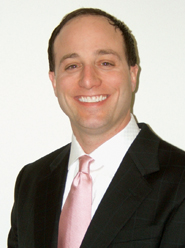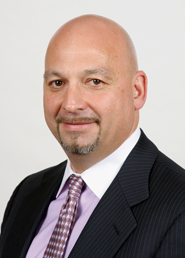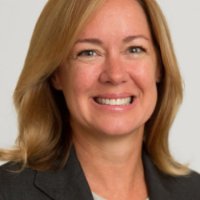The importance of exchange-traded funds is growing as ETF assets continue to soar. Bank of New York Mellon has predicted that ETF assets will double to $2 trillion by the end of 2015. Others, including consulting firm McKinsey & Co., think assets could go even higher by then, topping $4 trillion.
According to Onur Erzan, a partner at McKinsey, ETF assets will rise to between $3.1 trillion and $4.7 trillion by 2015, with the growth coming from both retail and institutional investors. As many investors use ETFs as a substitute for individual stocks, there could be a boost in overall volumes, since trades in ETFs can trigger a second set of trades in their underlying securities, he added.
"If someone is to buy an ETF, they’re buying exposure to what’s in that ETF," said Chris Hempstead, head of ETF trading at Cowen Group. "The exposure doesn’t come from nowhere. Someone does need to trade the names that are in it."
Hempstead said the success of ETFs in past years indicates a greater percentage of new money coming into the market will likely flow into ETFs as opposed to mutual funds or single stocks. He sees ETFs continuing to gain market share in the future.

Mark Esposito, chief executive officer of Dallas-based Esposito Securities, said he could see ETF assets topping $4 trillion even sooner than 2015. He notes a lot of bigger money managers have gotten into the ETF game as investor appetite has increased. Ultimately, however, the shift to passive ETF investing could hurt research shops.
"If they’re writing research on individual stocks, but everyone’s buying baskets, who cares?" said Esposito. "Unless it’s an active strategy, they’re not going to buy or sell an individual name based on research."
Of course that doesn’t mean research is going to go away. It just means we could be entering a period where the demand for research won’t be as high as it once was.
Ken Marschner, head of U.S. quantitative trading for UBS, said the shift towards passively managed investments reflects the fact that markets have gotten more efficient. If too many investors adopted passive strategies, it would create new inefficiencies, attracting money back to active management.
"There’s always a market for research and trying to generate alpha," Marschner said. "The reality is, if things shifted too far, and everybody was trading in passively managed instruments, it actually would make the bar lower in order to generate alpha."
Though indexes have to be rebalanced, the turnover in a passive ETF is a lot lower than for a normal managed strategy, so ETF growth could have a negative impact on volumes if it takes market share away from mutual funds. However, some of that volume could be made up for by the create-or-redeem process through which underlying securities get packaged into ETFs or ETFs get turned back into their underlying securities.
The business of creating and redeeming ETFs is performed by authorized participants who make sure the fund continues to track its underlying index. If demand for SPY, for instance, outpaces a rise in the S&P 500, APs will buy the underlying stocks and sell SPY. If demand for the ETF drops, they will do the opposite.
But what sounds like a simple business can actually be quite complex. For instance, APs can create millions of dollars worth of fund shares through in-kind transactions in which a trade never actually hits an exchange.
"There are not a lot of people that are APs," Esposito said. "It’s very complicated for people to understand it, and even more complicated to trade it."

Joseph Cangemi, chairman of the Security Traders Association and head of equity sales and trading for BNY ConvergEx Group’s global electronic trading unit, agreed. He called APs the most sophisticated trading pieces of the ETF puzzle.
"From a standpoint of a single-stock trader transitioning into a viable part of the AP desk, the skill set has to be a lot more sophisticated than a single-stock broker," Cangemi said.
Due to the nature of their business, APs often have to take on a lot of balance-sheet risk, as well. Esposito said many large firms have gotten into the AP business due to client demand, but some of them would rather not be there at all. As ETFs become more important, however, firms that are pro-active about their AP businesses could be rewarded.
Marschner said the primary reason UBS became an AP was because it needed to provide the best pricing for its institutional clients. Secondarily, though, it found the market-making business of an AP can be lucrative as well.
Cangemi was also sunny on the outlook for APs. He said the AP unit was one of the fastest growing businesses at ConvergEx.
The new generation
ETFs launched today are looking less and less like the index funds of the past, according to Adam Gould, senior vice president for business development at DirexionShares.
"The plain vanilla passive indexing ETF market seems to have matured or is in the process of maturing," Gould said. "A lot of the products that I see coming to market now are commodity offerings that weren’t out there before, various fixed income offerings that weren’t out there, some volatility strategies and other actively managed ETFs, so it seems to be a different kind of ETF that’s launching now."
Greg Friedman, who spent years developing funds for iShares and recently became managing director of products for Russell’s ETF business, said that as ETFs have evolved, hedge funds have tended to be the early adopters of new products.
"They were huge adopters of fixed-income and commodities ETFs, because in the past they couldn’t get access to those markets cheaply and effectively," Friedman said. "It was an easy way for them to get in and out-to get the exposure intraday."
A recent study by Goldman Sachs found that hedge funds currently hold $125 billion in gross exposure to ETFs.
About 80 percent of hedge funds’ ETF positions are short, the report found. The study’s authors said the short bias in ETFs came because fund managers tend to use ETFs for hedging, not because they are taking directional bets on the markets.

Laura Morrison, head of U.S. exchange traded products for NYSE Euronext, said hedge funds are a major driver of innovation in ETFs, frequently giving issuers their ideas about what new funds to launch.
"Hedge funds continue to be more and more active, and in the ETF space, issuers are paying close attention to what they have to say," Morrison said.
Briton Ryan, head of U.S. ETF sales and trading for Newedge, said ETFs are no replacement for old-fashioned stock picking, but they do give investors more tools, which he sees as a good thing. Pension funds, for instance, might not have the resources to research and invest in certain commodities or foreign securities, but an ETF can still provide exposure to those asset classes.
"A lot of portfolio managers maybe didn’t want to invest in ETFs, but as the ETF space has grown and their competitors are outperforming using ETFs, they feel they need to get involved," Ryan said.
ETFs offer complex ways to trade for clients that traditionally had far fewer options. Bill Smalley, vice president for exchange-traded funds at Factor Advisors, said that only a few years ago it was difficult to invest in something like gold, which is today widely held.
"There’s no question that ETFs have opened up asset classes to the masses that previously were difficult to own and to manage," Smalley said.
As more firms get in on the ETF game, however, margins have gotten thinner, according to Bob Tull, chief operating officer for Factor Advisors. He said the big, established desks are seeing aggressive new competitors.
Tull said some of these new, leaner firms have three to five guys doing the same thing that 20 traders on the ETF desk at a larger firm used to do.
Though relatively small, this new breed of ETF trading desks can have tremendous influence. That’s because they are interconnected to nearly every asset class there is. Tull said an ETF desk has tentacles that reach across the firm.
"It’s getting input from the foreign exchange guys, from the bond guys, from the international equity traders, from the derivative trading equity desks, the options guys," Tull said. "They’re becoming much more an expanded entity than the old silo trading desks."
Smalley said a lot of the trading desks he deals with are very much cross-functional. ETF traders are now neither equities traders nor traders of other asset classes. Instead, they are now simply market traders, he said.



